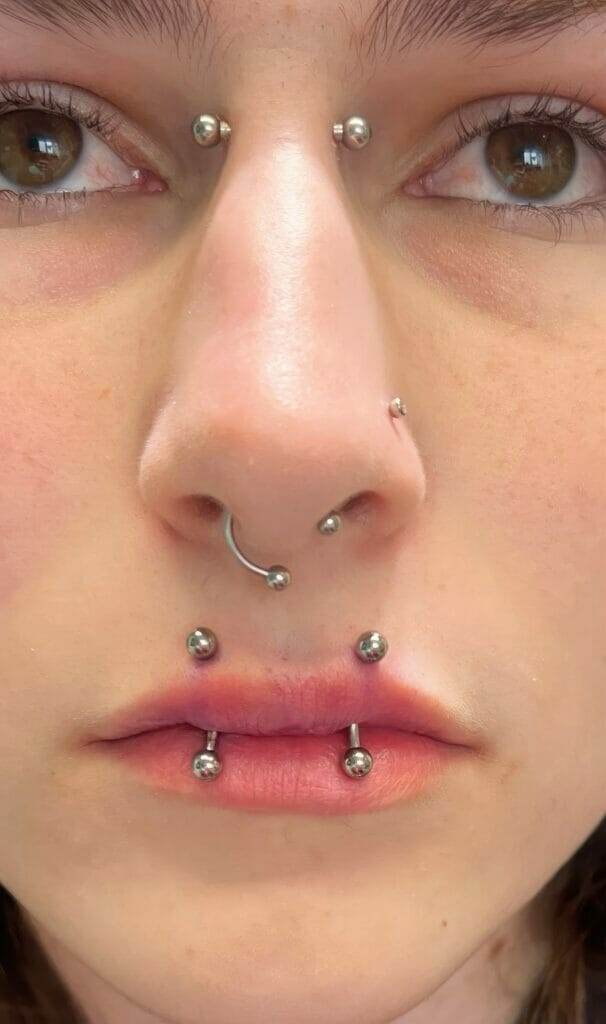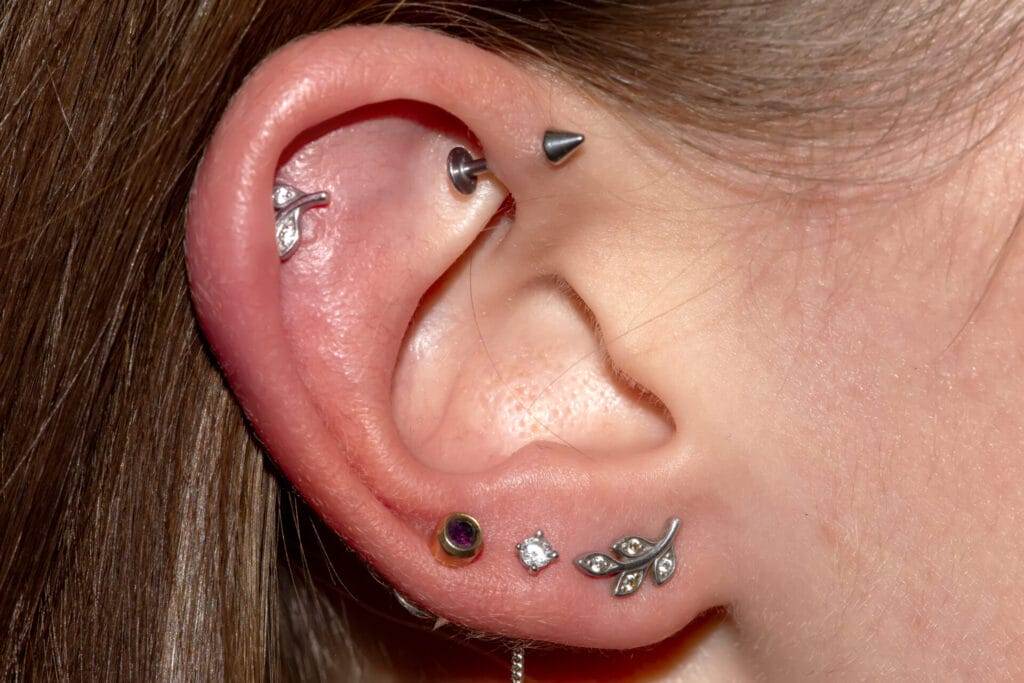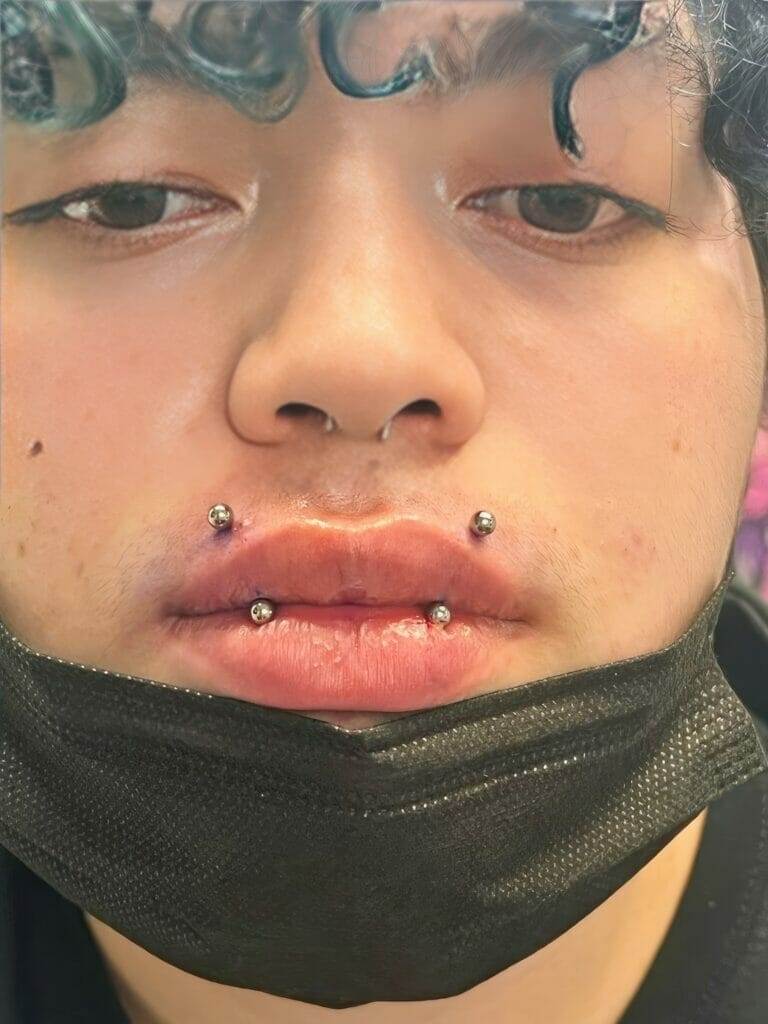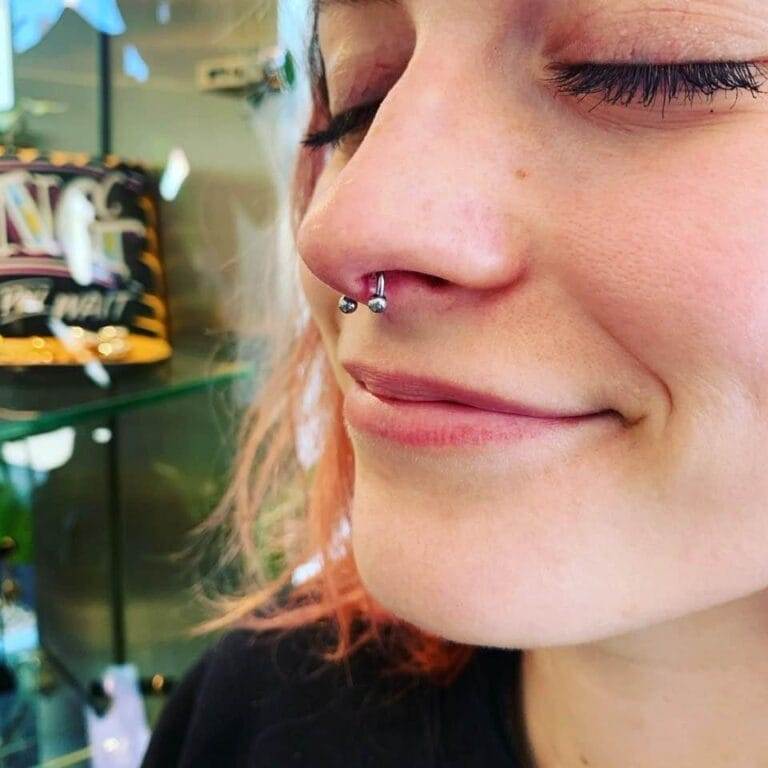The importance of aftercare for piercings
Aftercare is an essential part of the healing process for piercings. It plays a vital role in preventing infections and promoting proper healing. Properly caring for a piercing can also help reduce discomfort and ensure the longevity of the piercing. Here are some key reasons why aftercare is important:
- Preventing infections: Piercings create open wounds in the skin, making them susceptible to infections. Proper aftercare, such as cleaning the piercing with saline solution and avoiding touching it with dirty hands, can help prevent bacteria from entering the wound.
- Promoting proper healing: Aftercare allows the body to heal the wound effectively. By following a consistent aftercare routine, such as cleaning the piercing regularly and avoiding activities that may irritate it, the healing process can be optimized.
- Reducing discomfort: Without proper aftercare, piercings can become irritated and painful. Following aftercare instructions provided by a professional piercer can help minimize discomfort and ensure a more comfortable healing process.
Common misconceptions about healing process
There are several misconceptions about the healing process of piercings. It’s important to address these to ensure proper aftercare:
- Quick healing: Many people expect piercings to heal quickly, but the reality is that the healing time varies depending on the type of piercing. Some piercings can take several weeks or even months to fully heal, and rushing the process can lead to complications.
- Natural healing: Some people believe that leaving a piercing to heal on its own without any aftercare is sufficient. However, neglecting proper aftercare increases the risk of infections, prolonged healing time, and potential complications.
- Using alcohol or hydrogen peroxide: While it may seem logical to use alcohol or hydrogen peroxide to clean a new piercing, these solutions are too harsh and can cause irritation. Saline solution is the recommended cleaning agent as it helps maintain a sterile environment without irritating the wound.
In conclusion, aftercare is crucial for the healing process of piercings. It helps prevent infections, promotes proper healing, and reduces discomfort. It’s essential to debunk common misconceptions and follow professional aftercare instructions to ensure a successful and comfortable healing journey.
Preparing for Aftercare
Choosing a reputable piercer
Before getting a piercing, it is important to do thorough research and choose a reputable piercer. Look for professionals who have experience and good reviews. A reputable piercer will provide you with detailed aftercare instructions and answer any questions you may have.
Understanding the piercing procedure
It is crucial to have a good understanding of the piercing procedure before getting one. Different piercings require different aftercare routines, so it is important to know what to expect. Ask your piercer about the specific aftercare instructions for the piercing you are getting and make sure you are comfortable with the process.

The importance of aftercare
Aftercare is essential for the healing process of piercings. It helps prevent infections, allows the body to heal effectively, and reduces discomfort. It is important to follow the aftercare instructions provided by your piercer to ensure a successful healing journey.
Common misconceptions about healing
There are several misconceptions about the healing process of piercings that need to be addressed. It is important to understand that piercings take time to heal and rushing the process can lead to complications. Neglecting proper aftercare can also increase the risk of infections and prolong the healing time. Using alcohol or hydrogen peroxide to clean piercings is not recommended as they can cause irritation. Saline solution is the recommended cleaning agent.
Remember, aftercare is a crucial part of the piercing journey. By preparing beforehand, choosing a reputable piercer, understanding the procedure, and following the aftercare instructions, you can ensure a successful healing process.
General Aftercare Guidelines
In order for a piercing to heal properly, it is important to follow a few general aftercare guidelines. These guidelines will help prevent infections, reduce discomfort, and promote effective healing.
Cleaning the piercing with saline solution
One of the most important aspects of aftercare is cleaning the piercing with a saline solution. Saline solution is a mixture of salt and water that is gentle on the skin and helps keep the piercing clean. To clean the piercing, use a sterile saline solution and gently spray or soak the piercing for a few minutes. Avoid using alcohol or hydrogen peroxide as they can cause irritation.
Avoiding irritants and touching the piercing

During the healing process, it is important to avoid irritants and refrain from touching the piercing. Irritants such as perfumes, lotions, and harsh soaps can irritate the piercing and slow down the healing process. It is also important to avoid touching the piercing with dirty hands as it can introduce bacteria and increase the risk of infection. If you need to touch the piercing, make sure to wash your hands thoroughly beforehand.
By following these general aftercare guidelines, you can ensure a successful healing process for your piercing. It is important to remember that healing times can vary depending on the type of piercing, so it is essential to be patient and attentive to the needs of your piercing. If you have any concerns or questions during the healing process, it is always best to consult with your piercer or a healthcare professional.
Healing Process Timeline
Initial healing stage
During the initial healing stage, which typically lasts between 4 to 6 weeks, it is important to be extra cautious and attentive to the needs of your piercing. This is the period when the body works to close the wound and the surrounding skin begins to heal.
- Clean your piercing daily with a saline solution to prevent infections. Gently spray or soak the piercing for a few minutes.
- Avoid irritants such as perfumes, lotions, and harsh soaps that can irritate the piercing.
- Refrain from touching the piercing with dirty hands to reduce the risk of introducing bacteria.
- Be mindful of any discomfort or redness around the piercing, as these can be signs of infection.
Fully healed stage
The fully healed stage usually occurs after 3 to 6 months, but can vary depending on the type of piercing. During this stage, the piercing should be completely closed and the surrounding skin fully healed.
- Continue to clean your piercing regularly with a saline solution to maintain cleanliness.
- Avoid excessive twisting or movement of jewelry to prevent irritation.
- Be cautious when changing jewelry to avoid reopening the piercing.
- Keep an eye out for any signs of infection, such as persistent redness, swelling, or discharge.
Remember, everyone’s healing process is unique, so it is important to be patient and allow your body the time it needs to heal your piercing fully. If you have any concerns or questions, seek guidance from your piercer or a healthcare professional.
Troubleshooting and Problem Prevention
Recognizing signs of infection
It is important to be aware of the signs of infection when healing a piercing. Here are some indicators to watch out for:
- Increased pain, swelling, or redness around the piercing
- Persistent discharge that is yellow or greenish in color
- Foul odor coming from the piercing
- Fever or chills
If you notice any of these symptoms, it is essential to seek medical attention as soon as possible. Treatment for an infected piercing may include antibiotics or removal of the jewelry to allow the infection to heal.
Dealing with potential complications
Sometimes, complications may arise during the healing process. Here are a few common issues and how to address them:
- Scarring: Some scarring is normal, but excessive scarring can be reduced with proper wound care and using scar reduction treatments recommended by a healthcare professional.
- Migration or rejection: In some cases, the body may reject or push out the jewelry. If you experience migration or rejection, it is best to consult with your piercer or a healthcare professional.
- Allergic reactions: Allergies to certain metals used in jewelry can cause irritation or infection. If you suspect an allergic reaction, switch to jewelry made from hypoallergenic materials such as titanium or gold.
Remember, everyone’s healing process is unique, and it is important to listen to your body and take appropriate care. If you experience any complications or have concerns, do not hesitate to seek professional guidance.









